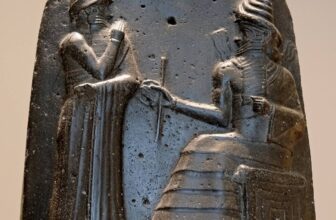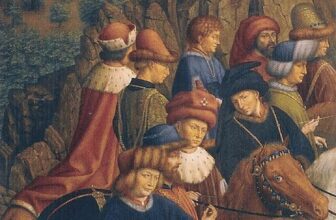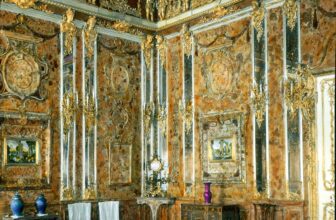Who is the Prince who bought Salvator Mundi For 450 Million dollar
The story of the mysterious buyer who acquired the iconic Salvator Mundi, attributed to Leonardo da Vinci, is one of intrigue, wealth, and global geopolitics. At the heart of the tale is a Saudi Arabian prince, Mohammed bin Salman (commonly known as MBS). His decision to purchase this painting for a record-breaking $450.3 million at a Christie’s auction in November 2017 has sparked significant interest, speculation, and debate worldwide. Below is a deep dive into who MBS is, his background, family, and the context of this high-profile acquisition.
The Man Behind the Purchase: Mohammed bin Salman
Mohammed bin Salman Al Saud is the Crown Prince of Saudi Arabia, born on August 31, 1985, in Jeddah, Saudi Arabia. He is the son of King Salman bin Abdulaziz Al Saud and Fahda bint Falah Al Hithlain, a member of a prominent Arabian tribal family.
MBS grew up in a royal environment, exposed to the dynamics of power, politics, and privilege from an early age. As the eldest of his mother’s children and one of King Salman’s many sons, he quickly emerged as a favorite for leadership. Despite not being the eldest overall, his sharp intellect, ambition, and ability to navigate palace politics positioned him as a rising star within the Saudi royal family.
Educational Background and Early Career
MBS graduated with a bachelor’s degree in law from King Saud University in Riyadh. His education provided him with insights into governance and legal structures, which would later play a pivotal role in shaping his policies. After completing his studies, he served in various administrative positions, gaining experience in both business and governance.
Initially, MBS worked as an advisor to his father, King Salman, during Salman’s tenure as the governor of Riyadh. This role allowed him to build relationships with influential figures and develop a deep understanding of Saudi Arabia’s political landscape. As his father’s stature grew, MBS’s influence also expanded.
Rise to Power
In January 2015, King Salman ascended to the throne following the death of King Abdullah. Soon after, MBS was appointed Minister of Defense, a position that thrust him into the spotlight. He also became the head of the Council for Economic and Development Affairs, making him responsible for overseeing Saudi Arabia’s economy.
MBS’s most significant move came in June 2017, when he was named Crown Prince, replacing his cousin, Mohammed bin Nayef. This consolidation of power marked a new chapter in Saudi politics. MBS introduced sweeping reforms under the banner of Vision 2030, aimed at diversifying Saudi Arabia’s oil dependent economy, modernizing the country, and reducing its reliance on oil revenues.
The Saudi Royal Family: A Brief Overview
The House of Saud is one of the world’s wealthiest and most influential royal families, with thousands of members. The family’s power stems from its control over the Kingdom of Saudi Arabia, the world’s largest oil exporter.
King Salman, the patriarch, is a pivotal figure in the family’s history. He is known for his administrative acumen and has ruled since 2015. Under his reign, MBS emerged as the family’s de facto leader, representing a younger generation eager to redefine Saudi Arabia’s global image.
The family’s wealth is staggering, with an estimated collective net worth of over $1 trillion. This immense fortune has enabled members to indulge in extravagant purchases, including yachts, palaces, and priceless works of art.
The Acquisition of Salvator Mundi
The purchase of Salvator Mundi, dubbed the “Male Mona Lisa”, marked a significant moment in the art world. The painting, depicting Christ holding a crystal orb, is one of fewer than 20 works attributed to Leonardo da Vinci. Its rediscovery in the early 2000s and subsequent restoration added to its allure.
In 2017, Salvator Mundi was auctioned at Christie’s in New York. The bidding war was intense, with the final price shattering all previous records for an artwork sold at auction. Reports initially suggested that Bader bin Abdullah bin Mohammed bin Farhan Al Saud, a little known Saudi prince, was the buyer. However, investigations later revealed that Bader had acted as a proxy for Mohammed bin Salman.
Why Did MBS Buy the Painting?
The motivations behind MBS’s purchase remain a subject of speculation. Several theories have been proposed:
- Cultural Symbolism: As part of his Vision 2030 reforms, MBS aims to position Saudi Arabia as a hub for art and culture. Owning a masterpiece like Salvator Mundi could bolster the kingdom’s cultural credentials.
- Soft Power Diplomacy: The acquisition could be seen as a demonstration of Saudi Arabia’s influence and wealth. By owning a Leonardo da Vinci painting, MBS elevates his country’s profile on the global stage.
- Personal Prestige: MBS is known for his taste for luxury and status symbols. Owning the world’s most expensive painting aligns with his penchant for exclusivity and grandeur.
- Religious and Historical Significance: The painting’s depiction of Christ could have symbolic value, representing a connection to the Abrahamic faiths that Saudi Arabia, as the birthplace of Islam, seeks to engage with more openly under MBS’s rule.
Controversies Surrounding the Purchase
The acquisition of Salvator Mundi was not without controversy. Critics questioned the painting’s authenticity, with some experts doubting whether it was genuinely created by Leonardo da Vinci. Additionally, the secretive nature of the transaction and the involvement of intermediaries fueled skepticism.
The purchase also drew criticism within Saudi Arabia. While some viewed it as an investment in cultural heritage, others argued that the money could have been better spent addressing social and economic issues in the kingdom.
The Painting’s Whereabouts
The exact location of “Salvator Mundi” has been a subject of speculation and debate. Following the purchase, Salvator Mundi was reportedly intended for display at the Louvre Abu Dhabi, a cultural collaboration between France and the UAE. However, its public unveiling was mysteriously postponed, and the painting’s location remains unknown. Speculation suggests that it may be housed on MBS’s luxury yacht, Serene, or stored in a secure facility.
Contrary to earlier reports suggesting it was displayed on Crown Prince Mohammed bin Salman’s yacht, recent investigations indicate that the painting is stored in a high security vault in Geneva, Switzerland. These facilities, known as freeports, offer secure, climate controlled storage for valuable artworks and assets.
MBS’s Legacy and Vision
The story of Salvator Mundi is just one chapter in the broader narrative of Mohammed bin Salman’s leadership. As Crown Prince, he has undertaken significant reforms, including granting women the right to drive, promoting entertainment and tourism, and curbing the influence of ultraconservative clerics. However, his tenure has also been marked by controversies, including the war in Yemen, the crackdown on dissent, and the assassination of journalist Jamal Khashoggi.
MBS’s leadership style is often described as bold and unapologetic. He envisions transforming Saudi Arabia into a modern, global powerhouse, but this ambition comes with risks. The purchase of Salvator Mundi reflects both his vision and the challenges he faces in balancing tradition and modernization
The tale of Mohammed bin Salman and Salvator Mundi is a microcosm of his larger than life persona and the complexities of his rule. It intertwines art, power, and geopolitics, highlighting the intricate dynamics of Saudi Arabia’s royal family and its ambitions on the world stage.
While the painting’s ultimate fate remains uncertain, its acquisition serves as a testament to MBS’s influence and the lengths to which he is willing to go to reshape perceptions of his country. Whether viewed as a visionary or a controversial figure, Mohammed bin Salman’s role in this story ensures that it will be remembered as one of the most fascinating episodes in the history of art and power.




